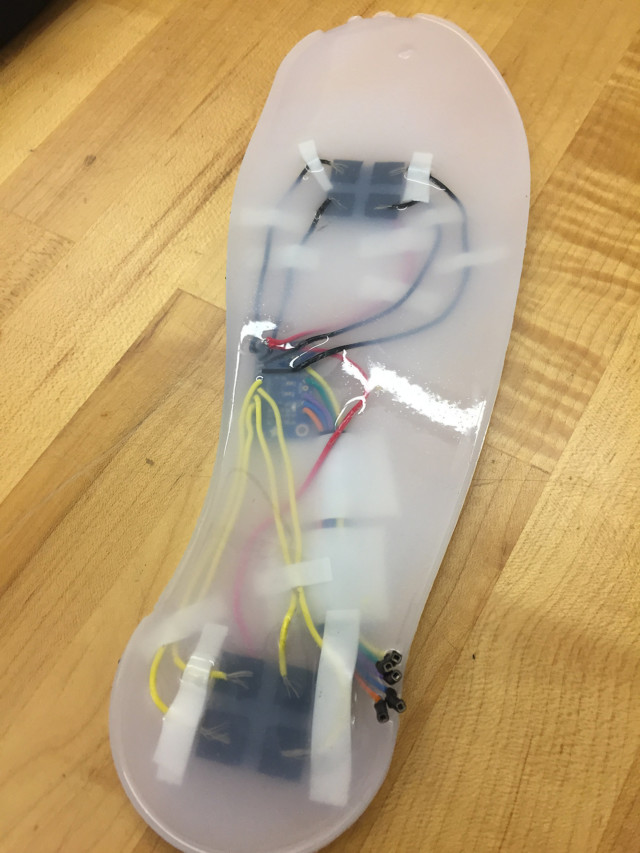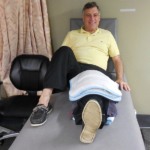Small new shoe sensor may be a driving ‘force’ to help prevent injuries, improve athletic performance
Sensor can show athletes, trainers where foot impacts are strongest to detect and correct inefficiencies in movement and reduce injuries, also can help diabetics avoid foot blisters.

Elite female runners Becky Wade, left, Caroline Rotich, Mara Olson, Sarah Pagano and Lauren Jimison run along Ocean View Boulevard during the Big Sur Half Marathon in Pacific Grove on Sunday, Nov. 13, 2016. Pagano finished first, Wade finished second, Jimison finished third, Olson came in fourth and Rotich finished sixth. David Royal, Monterey Herald via AP
Chris Adam, Purdue University October 25, 2018
Justin Markel and Quinton Lasko know what it’s like to be competitive athletes and the cost of being injured on the field. Now, the Purdue University alumni have turned their passions for sports and engineering into a new technology they hope will be an athlete’s solution to worrying about preventable non-contact injuries.
The issue affects many individuals and families in the United States – with more than 8.6 million sports- and recreation-related injuries reported each year, according to the Centers for Disease Control and Prevention.
Markel, Lasko and other researchers at Purdue developed an insole sensor to provide a practical method of measuring the full range of forces on the foot. Their capacitive force sensor uses parallel plates to measure 3D forces on the foot and then transmit the data to a central hub computer or tablet.

An insole shoe sensor developed at Purdue helps to measure the full range of forces on the foot. Purdue University
“Our team is really passionate about pushing athletic performance to the next level, and giving athletes the opportunity to gain a competitive edge,” Markel said. “Every athlete is unique, and providing complete 3D force data is essential to understanding peak-performance and ultimately reducing injury potential.”
The Purdue mobile insole sensor is small, flexible and adjustable to work for different body types and different athletic applications. The researchers also believe the technology may be helpful for shoe companies to use the data in designing footwear and for diabetic patients to avoid blisters on their feet.
“Existing mobile sensors that our technology competes with use pressure mapping to derive force measurements, and this really doesn’t provide the whole picture,” Lasko said. “We believe our technology could lead to individualized training that allows athletes to detect and correct inefficiencies in their movement and reduce their chances of being injured.”
The other student researchers involved with the project include Dane Rudy, Jennifer Regard and Christopher Spiers. They won the 2017 Malott Innovation Award from the School of Mechanical Engineering for their technology.
Their work aligns with Purdue’s Giant Leaps celebration, celebrating the university’s global advancements in health as part of Purdue’s 150th anniversary. This is one of the four themes of the year long celebration Ideas Festival, designed to showcase Purdue as an intellectual center solving real-world issues.
| The technology is patented through the Purdue Office of Technology Commercialization, and the innovation is available for licensing. |
 Source Purdue University via Medical Xpress
Source Purdue University via Medical Xpress
Also see
Brave soles? Study looks to prevent foot pain in standing workers Simon Fraser University
No pain, no gain? It’s not the way Medical Xpress





